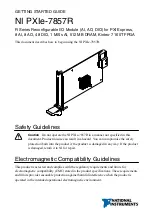
CAP.4
INSTALLAZIONE
QUESTE OPERAZIONI SONO DI COMPETENZA ESCLUSIVA DEI
TECNICI SPECIALIZZATI INCARICATI DAL COSTRUTTORE O DAI
RIVENDITORI AUTORIZZATI .
SE EFFETTUATE DA ALTRE PERSONE POSSONO CREARE
SITUAZIONI DI PERICOLO E CAUSARE GRAVI DANNI ALLE
PERSONE E/O AL SOLLEVATORE.
VERIFICA DEI REQUISITI PER L’INSTALLAZIONE
Il sollevatore è costruito per l’impiego in locali chiusi o riparati.
Il luogo prescelto non deve essere vicino a lavaggi, a posti di verniciatu-
ra, a depositi di solventi o vernici, a locali con lavorazioni che possono
creare atmosfere esplosive.
VERIFICA DI IDONEITÀ DELLE DIMENSIONI DEL LOCALE
E DELLE DISTANZE DI SICUREZZA.
Il sollevatore deve essere installato rispettando le distanze di sicurezza
da muri,colonne, altre macchine, ecc. e secondo le eventuali prescrizio-
ni della legislazione vigente nel luogo di installazione.
Verificare in particolare:
·
altezza: considerare l’altezza dei veicoli da sollevare tenendo
conto che l’altezza max. dei bracci è di 2000 mm.
.
·
distanza dai muri: minimo 700 mm,
·
spazi per lavorare: minimo 800 mm, oltre le dimensioni del veicolo da
sollevare.
·
spazi per la POSTAZIONE DI COMANDO,
·
spazi per la manutenzione, per accessi e vie di fuga in caso di
emergenze.
·
posizione relativa alle altre macchine,
·
possibilità di realizzare l’allacciamento elettrico.
ILLUMINAZIONE
Tutte le zone della macchina devono essere illuminate in modo unifor-
me e sufficiente per garantire le operazioni di regolazione e manuten-
zione previste nel manuale, evitando zone d’ombra, riflessi, abbaglia-
mento e affaticamento della vista.
L’illuminazione deve essere realizzata in accordo con la normativa vi-
gente nel luogo di installazione (a cura dell’installatore dell’impianto di
illuminazione).
PAVIMENTO
Il sollevatore deve essere installato su platea orizzontale di spessore
minimo 200 mm realizzata in calcestruzzo dosato con resistenza 30
N/mm
2
.
Il pavimento deve inoltre essere piano e ben livellato (10 mm di tolleran-
za sul livellamento).
Nel caso di applicazioni particolari, interpellare il costruttore.
CHAPTER 4
INSTALLATION
THE FOLLOWING OPERATIONS MUST BE PERFORMED
EXCLUSIVELY BY SPECIALISED TEHCNICAL STAFF WITH
AUTHORISATION FROM THE MANUFACTURER OR LICENSED
DEALER. IF THESE OPERATIONS ARE PERFORMED BY OTHER
PERSONS , SERIOUS PERSONAL INJURY AND/OR
IRREPERABLE DAMAGE TO THE LIFT UNIT MAY RESULT.
INSTALLATION REQUISITE CHECKLIST
The lift is designed for installation in enclosed areas suitably pro-
tected from the weather. The place of installation must be away
from areas destined to washing, painting, solvent or paint storage
areas or where there is a risk of potentially explosive atmosphere.
SUITABILITY OF THE DIMENSIONS OF THE PLACE OF
INSTALLATION AND SAFETY CLEARANCES.
The lift must be installed in observance of the clearances between
walls, pillars, other machines, etc.and in compliance with any legi-
slative requirements in the country of installation.
Check in particular:
·
minimum height: you must consider carefully the height of vehi-
cle and the maximum height of arms, i.e. 2000 mm.
·
minimum distance from walls: 700 mm,
·
minimum distance from walls: 700 mm,
·
minimum working area: 800 mm,
·
area for COMMAND STATION,
·
area for maintenance, access and emergency escape routes.
·
position in relation to other machines,
·
proximity to power supply for trouble-free hook-up.
ILLUMINATION
All parts of the machine must be uniformly lit with sufficient light to
assure that the adjustment and maintenance operations specified
in the manual can be performed, and without areas of shadow, re-
flected light, glare and avoiding all situations that could give rise to
eye fatigue. The lighting must be installed in accordance with the
laws in force in the place of installation (responsibility lies with the
lighting equipment fitter).
FLOOR
The lift must be installed on a horizontal concrete bed of adequate
strength, of a minimum thickness of 200 mm made in concrete bat-
ched with strenght 30 N/mm
2
.
The floor surface must be flat and levelled (10 mm tolerance).
Consult the manufacturer for special applications.
9
Summary of Contents for ECOLIFT30
Page 1: ...I SOLLEVATORE ELETTROIDRAULICO A1 COLONNA GB 1 POST ELECTRO HYDRAULIC LIFT ECOLIFT30...
Page 2: ......
Page 15: ...SCHEMA ELETTRICO TRIFASE THREE PHASE WIRING DIAGRAM 13...
Page 16: ...SCHEMA ELETTRICO TRIFASE THREE PHASE WIRING DIAGRAM 14...
Page 17: ...SCHEMA ELETTRICO TRIFASE THREE PHASE WIRING DIAGRAM 15...
Page 23: ......










































